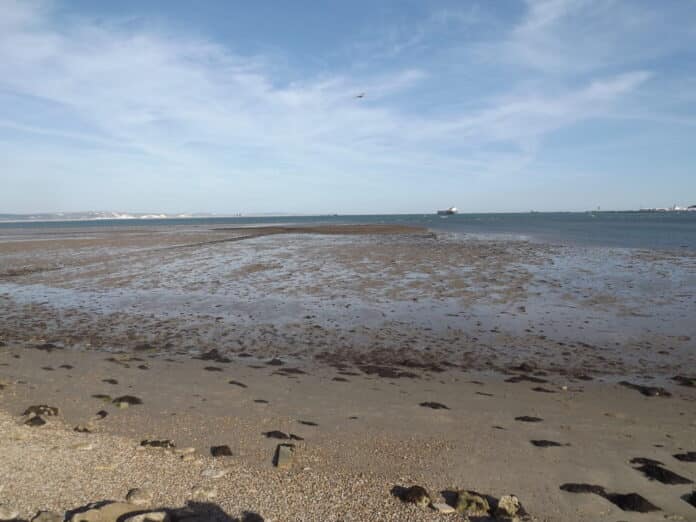Before leaving Sandsfoot Castle it is worth having a look at the building stone that was used. The main facing stone is blocks (ashlar) of Portland Limestone but there is a lot of other stone that has been used and this can be seen in the fallen material on the beach. Again it is important to stress that a low tide is needed to look at this section safely. The picture below give some idea of the range of material used including rounded boulders that probably came from the beach when the castle was built. At that time the harbour was open to the sea as the breakwaters were not constructed until Victorian times so the cliffs would have been open to much greater wave attack than now.

Some of the stone used is interesting especially if you have a magnifying glass or hand lens. The example below is a shelly oolitic limestone almost certainly of local origin.
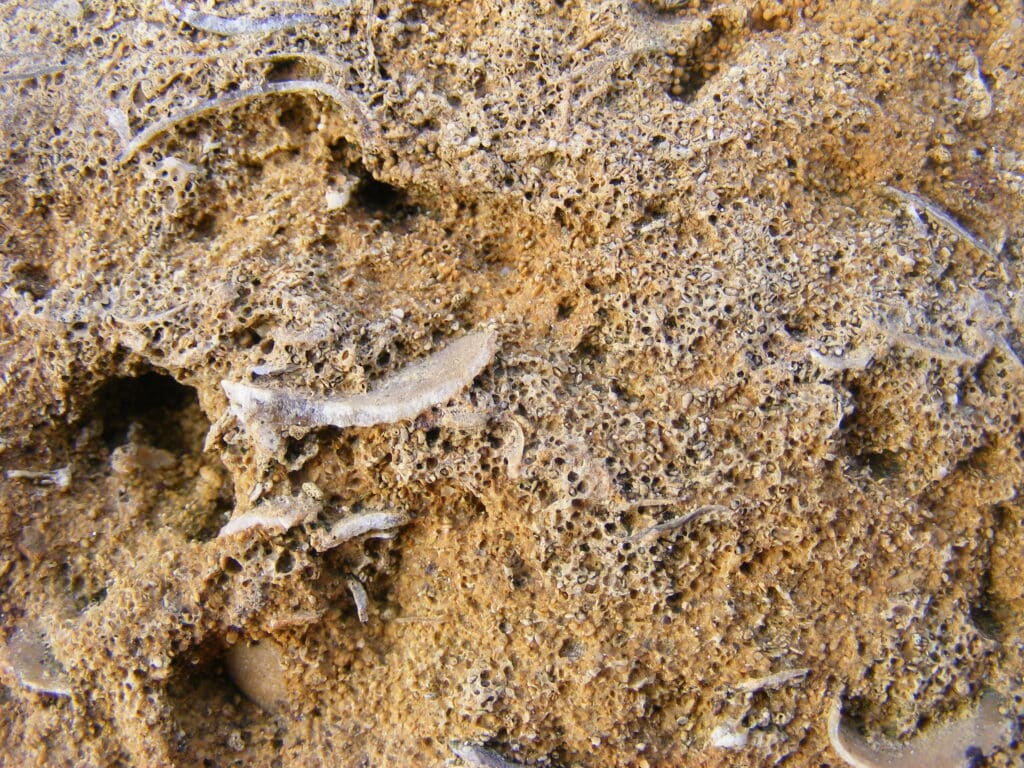
Walking further west you will see rock armour (to protect the slopes below the road) made of Portland Limestone which contains dark blue/black chert as well as fossil bivalves (oysters). You will need to join the Rodwell Trail (former railway line to Portland from Weymouth) to get round the Sandsfoot Sailing Club HQ. There are places to get to the beach further west where the Kimmeridge Clay is exposed. The clay can be quite fossiliferous but it just depends on local exposure. Occasionally vertebrae from marine reptiles (ichthyosaurs) have been found but ammonites and bivalves are much more common. The picture below is of part of an oyster bed eroded from the clay.
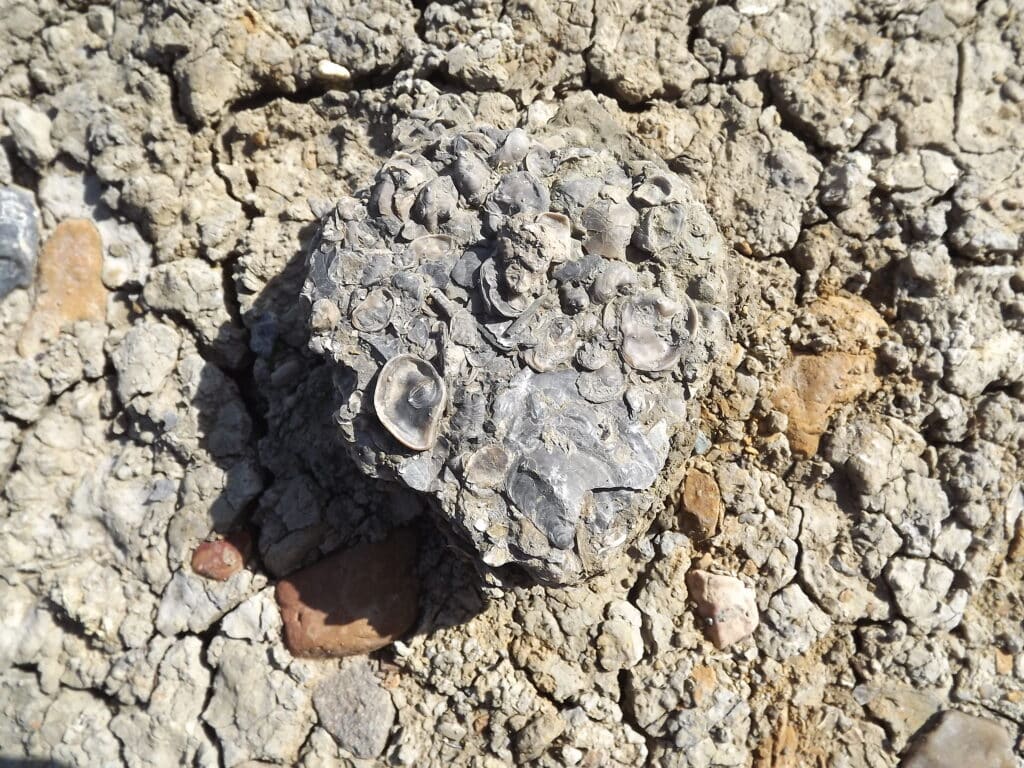
Other oysters include one called Ostrea delta because it is shaped like the Greek letter delta. These are very common on the shore of Portland Harbour and the southern end of the Fleet
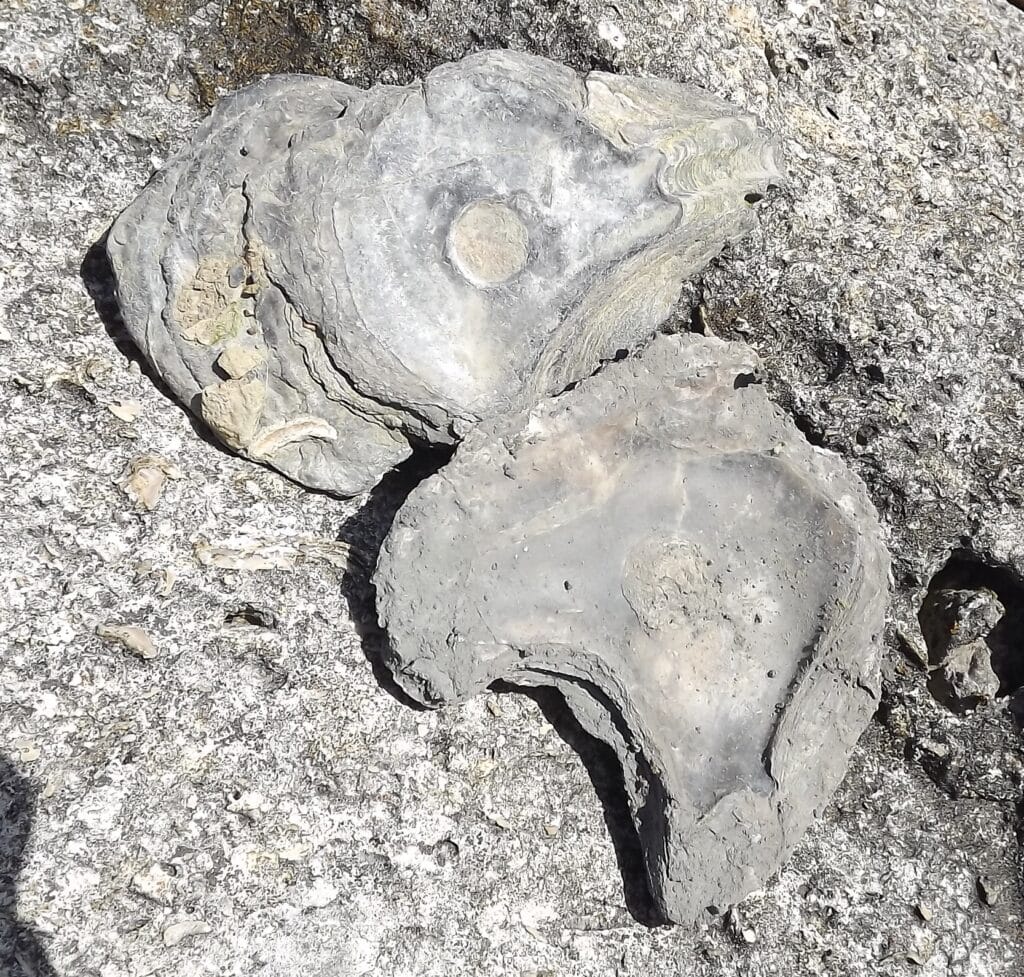
Another feature commonly seen eroded from the clay are septarian nodules, large concretions up to 30cm across made of calcium carbonate and when broken open they have veins of calcite. They can also contain fossils. These concretions grew in the clay after it was deposited on the sea floor back in Jurassic times around 150 million years ago. If you have been following the blog over the weeks you might remember these from Ringstead where the Kimmeridge Clay can be seen.

Occasionally you might find rocks from other places e.g. gabbro from the Lizard in Cornwall (a dark crystalline igneous rock) on the beach which might have been used for ships ballast and was jettisoned when the ships picked up another cargo in Portland Harbour. There is also a lot of debris on the beach from past attempts at coastal protection to confuse things even further!
Working south from Ferry Bridge around Portland Harbour there is little geological interest and Chesil Beach will be included in a future edition. In the picture below you will notice the difference between the angular and varied pebbles on Ham Beach compared with the well sorted material on Chesil Beach due to long periods of wave action.
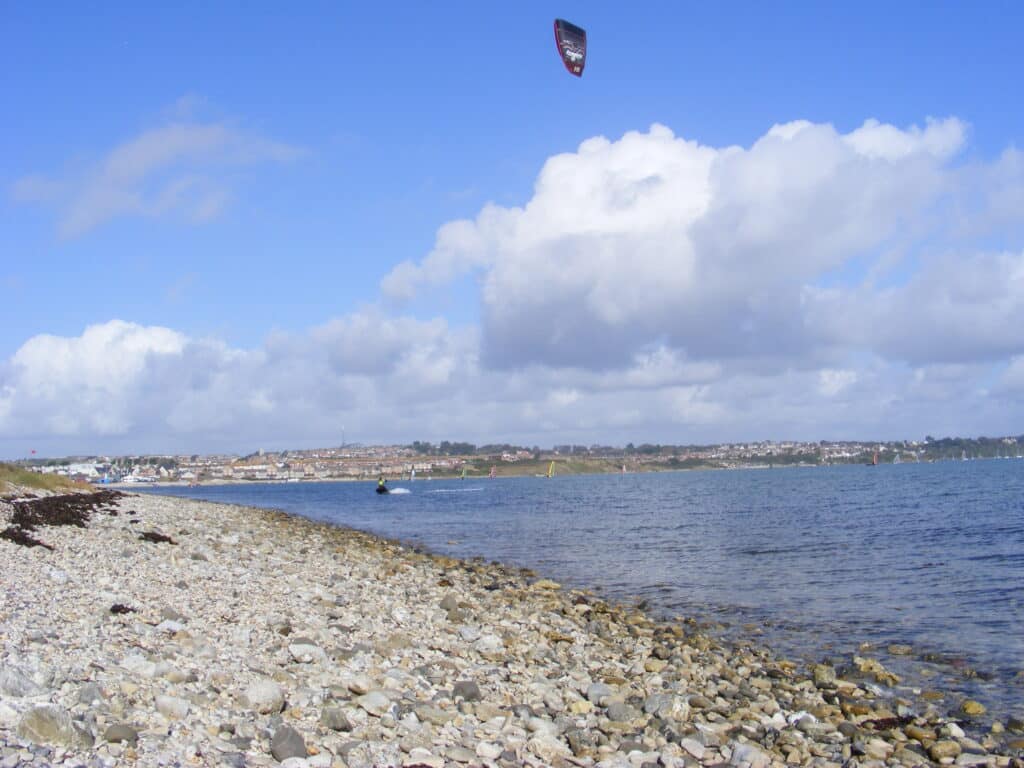
However one thing of note from the past few days and earlier is the changes in water level in the Fleet and Portland Harbour due to tidal effects. Last week we had a very low tide due to the Supermoon event with the Moon closest to the earth for 20-30 years. The view below was taken 29th September and contrasts dramatically with the storm picture taken in March 2008.
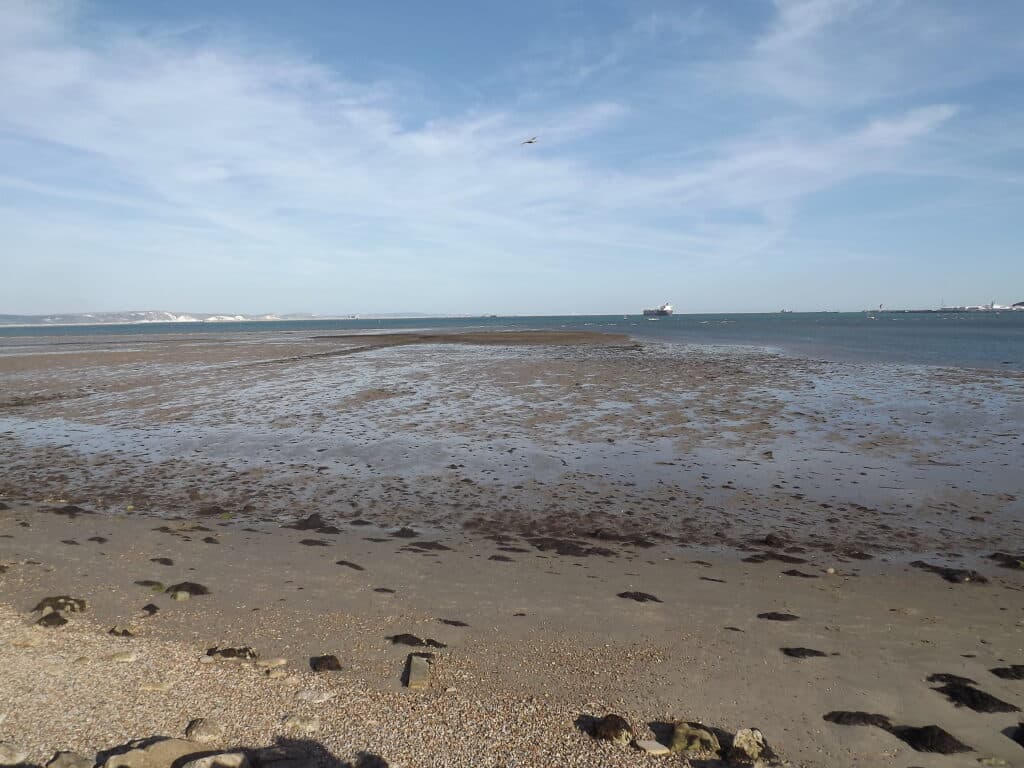

Join us in helping to bring reality and decency back by SUBSCRIBING to our Youtube channel: https://www.youtube.com/channel/UCQ1Ll1ylCg8U19AhNl-NoTg SUPPORTING US where you can: Award Winning Independent Citizen Media Needs Your Help. PLEASE SUPPORT US FOR JUST £2 A MONTH https://dorseteye.com/donate/

